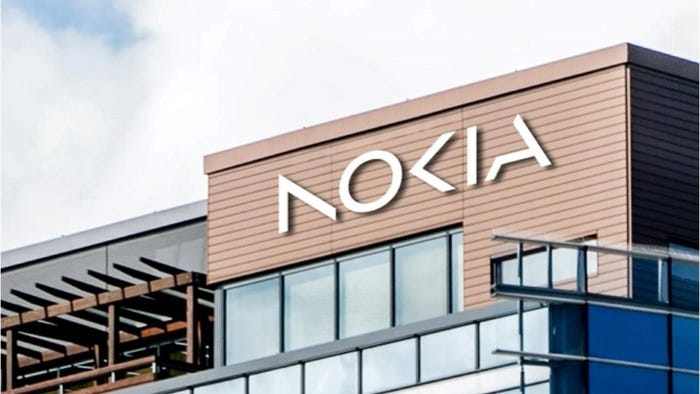Rakuten Symphony changes RAN tune with 'open' licensing
The technology formerly known as Altiostar is now aimed mainly at radio manufacturers and systems integrators, rather than telcos.

A telco would not typically own the software that powers its radio access network (RAN). Rakuten became an obvious exception about three years ago when it took full control of Altiostar. The US developer, valued by that deal at more than $1 billion, already supplied the software for the mobile network Rakuten was building in Japan. But Rakuten also believed it could challenge the established kit vendors of Ericsson and Nokia by selling Altiostar's product, rebranded SymRAN under its new Rakuten Symphony business, to other telcos. After three years of toil, these plans have now been largely shredded.
In a dramatic pivot, news of which was first aired at this year's Mobile World Congress (MWC), Rakuten is targeting vendors rather than telcos. The makers of radio units (RUs) will be able to license the SymRAN software, combine it with their own technology and bring a fully integrated product to market. Systems integrators are another target customer group.
"We announced that at MWC and now everything is finalized and hopefully by next quarter we'll be releasing the pricing and working closely with certain vendors, not operators, who are developing RUs and people interested in private 5G," said Sharad Sriwastawa, the CEO of Rakuten Symphony, during an interview with Light Reading at this week's Digital Transformation World (DTW) event in Copenhagen. "They can white label our product."
The strategic pivot under his leadership comes in the mobile equipment industry's worst slump since the dotcom crash. Sales of RAN products fell 11% last year, according to market-research firm Omdia (a Light Reading sister company), and they are expected to drop another 7% to 9% this year. Smaller vendors backing "open RAN" (O-RAN) – whose interfaces are designed to aid the fusion of products from different suppliers – have made little progress against the industry's big three of Ericsson, Nokia and China's Huawei.
SymRAN's biggest customer is still Rakuten Mobile. Outside Japan, its only visible telco contracts have been with Dish Network, a US "greenfield" operator now on the brink of bankruptcy, and 1&1. Another greenfield, the German operator has struggled to activate sites, blaming its delays on Vodafone-owned Vantage Towers, a provider of masts. Most big telcos in Europe and North America still deal mainly with Ericsson and Nokia.
No Red Hat model for now
Rakuten's decision to license SymRAN to other vendors, then, is perhaps not such a gamble. It will not stop Rakuten from continuing to serve Dish and 1&1 or from pursuing newer relationships with NOW Telecom in the Philippines and VEON-owned Kyivstar in Ukraine, still heavily reliant on Chinese kit.
Nor, for the time being, does Rakuten appear to be going quite as far as Hiroshi Mikitani, its founder and group CEO, recently suggested. On his company's last earnings call, Mikitani drew comparison with Red Hat, a developer of cloud-computing software platforms that evangelizes about "open source" and earns money from the sale of services and support rather than licenses.
Instead, Rakuten will have three fixed price tiers depending on the size of the customer's deployment as well as variable fees for each unit of customer premises equipment, said Sriwastawa. "Hopefully next quarter we can sign something," he said. Customers will also gain access to SymRAN's source code, which they can tinker with for their own purposes.
But what about potential clients? Sriwastawa and other Rakuten executives recently met with senior figures at the Federal Communications Commission, the US telecom regulator, to discuss the new licensing approach, among other topics. Interest in Rakuten as a politically acceptable vendor could feasibly come from US companies that have spent research-and-development budgets in areas other than software, such as RU hardware design.
"There are so many players and especially in the 4G space on O-RAN there's nothing else proven globally at scale apart from our solution," said Sriwastawa. "But we do see a lot of investment, if you forget the big three, and small players have done a lot of R&D." Those companies, he emphasized, would be the target customers for SymRAN.
Android of the RAN
Back in Japan, meanwhile, Rakuten Mobile, as the network is branded, has been adapting that software and the hardware that hosts it. The RAN was originally built on Cascade Lake and Ice Lake, generations of central processing units (CPU) developed by Intel. But Sriwastawa's technical team is working on a shift to the next Intel generation, known as Granite Rapids.
With the older platforms, any "accelerators," providing oomph for more resource-hungry "Layer 1" software, would have been delivered on PCIe cards, separate from the CPU. Granite Rapids puts those accelerators on the same die as the main processor. Taking advantage of them could necessitate software changes, although Sriwastawa previously downplayed the effort. He reckons the entire upgrade will take three or four months and require some "customization" but no big outlay on capital expenditure.
At the same time, Rakuten is now working closely with Qualcomm on an alternative approach. This would involve substituting Qualcomm's hardware and software for Intel and SymRAN in Layer 1 only, using PCIe cards to bypass the CPU. It's an option, unsurprisingly, that Intel dislikes, and it would clearly increase Rakuten Mobile's reliance on customized chips and proprietary code. But supporters of this "inline" architecture claim it is far more efficient in areas of high demand for advanced 5G services.
All this does raise the possibility there will be multiple versions of SymRAN in future. If there is much tinkering with source code by RU vendors and systems integrators, the software could fork in various directions. Of course, something like that already seems to have happened in the case of the Android OS for smartphones – yet without any damaging fragmentation of the ecosystem. And Rakuten would probably not be unhappy with a role as the Android of the RAN.
Read more about:
AsiaAbout the Author(s)
You May Also Like














